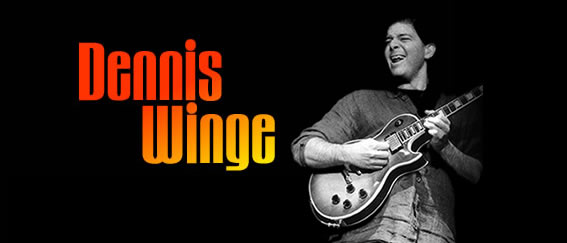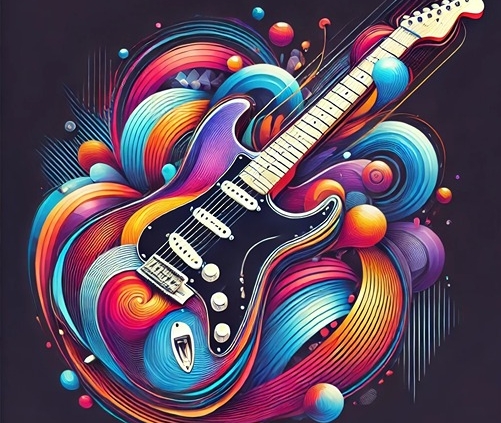My Journey Through Diverse Musical Styles:
/in Blog Posts/by denniswingeAs a musician, one of the most rewarding aspects of my career has been the opportunity to explore and master a wide range of musical genres. Each style presents its own unique challenges and joys, enriching my musical journey and broadening my perspective as a guitarist. From the high-energy riffs of punk rock to the intricate melodies of classical guitar, each genre has left an indelible mark on my playing. In this blog, I will share my experiences with various musical styles and delve into what makes each one unique, along with some of the challenges they present for guitarists.
Punk Rock
In my 20s, I was part of a punk-rock band, a genre known for its raw energy and straightforward approach.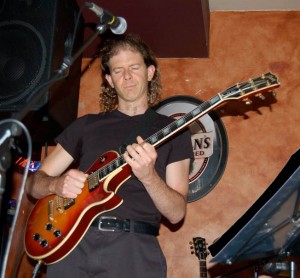 Punk rock typically features fast tempos, simple power chords, and rebellious lyrics. The music is direct and unpretentious, focusing more on attitude and energy than technical prowess.
Punk rock typically features fast tempos, simple power chords, and rebellious lyrics. The music is direct and unpretentious, focusing more on attitude and energy than technical prowess.
While punk rock might seem simple, maintaining the high energy level required for extended periods can be physically demanding. Precision in timing is also crucial, as the fast tempos leave little room for error. Additionally, capturing the genre’s raw emotion and rebellious spirit in your playing is essential. Here is a sample of the punk rock I made way back then.
Jazz Swing
Jazz swing, particularly the style popularized by Django Reinhardt, is a sophisticated genre that combines intricate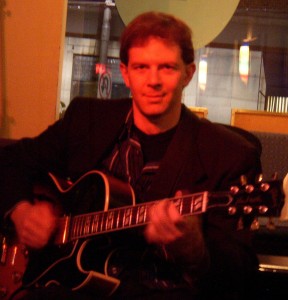 melodies with rhythmic precision. Django’s style is characterized by its use of gypsy jazz techniques, including fast arpeggios, chromatic runs, and syncopated rhythms.
melodies with rhythmic precision. Django’s style is characterized by its use of gypsy jazz techniques, including fast arpeggios, chromatic runs, and syncopated rhythms.
Jazz swing requires a high level of technical skill and a deep understanding of music theory. Guitarists must be able to improvise and think on their feet, creating complex solos on the spot. The genre’s fast tempos and intricate melodies also demand excellent finger dexterity and coordination. Here is a sample of some Djang0-style jazz guitar.
Dixieland Jazz
Dixieland jazz, also known as traditional jazz, is a lively and joyous genre that originated in New Orleans. It features a collective improvisation style, where multiple musicians improvise simultaneously. The guitar often plays a rhythm role, providing a steady beat and harmonic foundation for the ensemble.
The primary challenge in Dixieland jazz is maintaining tight coordination with other musicians during collective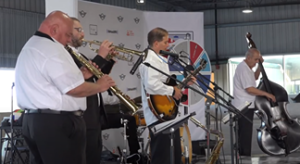 improvisation. Guitarists must listen closely to their bandmates and respond in real-time, all while keeping the rhythm steady. This genre also requires a strong sense of timing and groove. Here is a video of one of our Dixieland Jazz performances.
improvisation. Guitarists must listen closely to their bandmates and respond in real-time, all while keeping the rhythm steady. This genre also requires a strong sense of timing and groove. Here is a video of one of our Dixieland Jazz performances.
Mainstream Jazz
Mainstream jazz encompasses a broad range of styles and is often based on the standard repertoire of jazz classics. This genre is known for its complex chord progressions, improvisation, and expressive phrasing.
Playing mainstream jazz requires a thorough understanding of jazz theory, including scales, modes, and chord substitutions. Guitarists must be adept at improvisation, creating spontaneous solos that are both melodically and harmonically interesting. The genre’s intricate chord progressions also demand precise finger placement and smooth transitions. Here is a video of one our mainstream jazz performances.
Modern Jazz
Modern jazz pushes the boundaries of traditional jazz, incorporating elements like odd meters, unconventional harmonies, and avant-garde techniques. This genre is constantly evolving, with musicians experimenting with new sounds and ideas.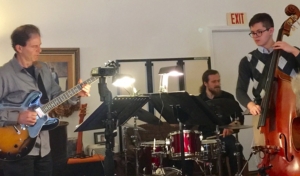
Modern jazz can be highly complex, with irregular time signatures and intricate harmonic structures. Guitarists must be comfortable navigating these unusual rhythms and creating coherent solos within them. This genre also requires a high level of creativity and openness to experimentation. Here is a link to my album What Are the Odds? that features many odd meters.
Free Jazz
Free jazz is a genre that emphasizes spontaneous improvisation and freedom from traditional musical structures. It often features dissonance, atonality, and unstructured forms, allowing musicians to express themselves without constraints.
The lack of structure in free jazz can be both liberating and challenging. Guitarists must be highly skilled in improvisation and able to think creatively in the moment. It also requires excellent listening skills and the ability to communicate musically with other band members.
Classic Rock
Classic rock is a genre that encompasses the rock music of the 1960s and 1970s. It features powerful guitar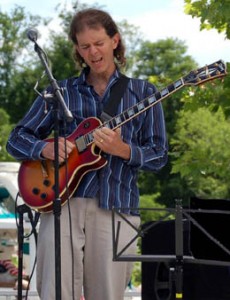 riffs, memorable melodies, and a strong backbeat. Bands like Led Zeppelin, The Rolling Stones, and Pink Floyd are iconic in this genre.
riffs, memorable melodies, and a strong backbeat. Bands like Led Zeppelin, The Rolling Stones, and Pink Floyd are iconic in this genre.
Playing classic rock requires a good sense of timing and rhythm, as well as the ability to deliver powerful and emotive performances. Guitarists must also be able to replicate iconic solos and riffs, which often demand a high level of technical skill. Here is a clip of my playing classic rock solo at a campground on July 4th.
Modern Rock
Modern rock continues to evolve, incorporating elements from various genres like punk, metal, and alternative rock. It often features a heavier sound, with distorted guitars and complex arrangements.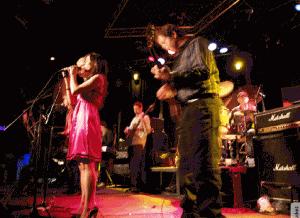
Modern rock guitarists must be versatile, adapting to different playing styles and techniques. The genre’s heavy use of effects and technology also requires a good understanding of gear and sound engineering. Here is a video of our cover band, The Way, playing some modern rock for a younger audience at a local fraternity party.
Blues
Blues music is characterized by its simple chord progressions, expressive phrasing, and emotional depth. It has been a foundational genre for many other styles, including rock and jazz.
Blues guitarists must be able to convey deep emotion through their playing, often with minimalistic techniques. The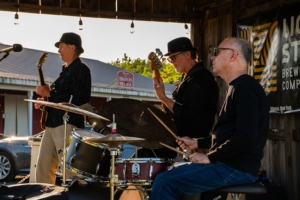 genre’s emphasis on feel and groove requires excellent timing and phrasing. Improvisation is also a key element, demanding creativity and spontaneity. Here is a video of my blues band, Blue Train, playing “Rock Me Baby.”
genre’s emphasis on feel and groove requires excellent timing and phrasing. Improvisation is also a key element, demanding creativity and spontaneity. Here is a video of my blues band, Blue Train, playing “Rock Me Baby.”
Salsa / Latin Jazz
Salsa and Latin jazz are genres that combine Afro-Cuban rhythms with jazz harmonies and improvisation. They feature intricate percussion patterns, syncopated rhythms, and vibrant melodies.
Playing salsa and Latin jazz requires a strong sense of rhythm and the ability to navigate complex syncopations. Guitarists must be able to integrate themselves into the percussion-heavy ensemble, often playing rhythmic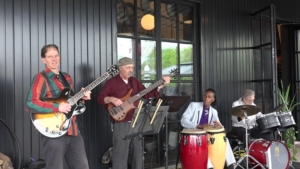 patterns that complement the drums and bass. Here is a video of my salsa band, Sunset Salsa, playing on Cinco De Mayo.
patterns that complement the drums and bass. Here is a video of my salsa band, Sunset Salsa, playing on Cinco De Mayo.
Classical Guitar
Classical guitar is a genre that encompasses the music of composers from the Renaissance to the modern era. It requires a high level of technical precision and expressive playing.
Classical guitarists must have excellent fingerpicking technique and the ability to read complex sheet music. The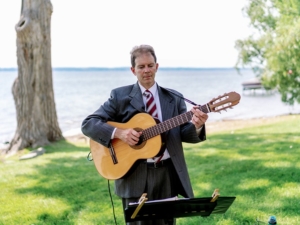 genre demands precise control over dynamics and articulation, as well as the ability to convey the emotional depth of the music. Here is a sample classical guitar performance.
genre demands precise control over dynamics and articulation, as well as the ability to convey the emotional depth of the music. Here is a sample classical guitar performance.
Fusion
Fusion is a genre that blends elements from various styles, such as jazz, rock, funk, and world music. It is characterized by its eclectic approach and innovative sounds.
Fusion guitarists must be highly versatile, able to switch between different playing styles and techniques seamlessly. The genre’s emphasis on experimentation and innovation requires creativity and an open mind. Here is a sample fusion performance.
Conclusion
Exploring diverse musical styles has been an incredibly rewarding journey for me as a guitarist. Each genre has its unique characteristics and challenges, offering new ways to grow and express myself musically. Whether it’s the raw energy of punk rock, the sophisticated rhythms of jazz, or the heartfelt emotion of blues, each style adds a different dimension to my playing. This diversity not only keeps my musical life exciting but also allows me to connect with a broader audience, enriching their lives with the power of music.
To explore live music options for your event, book a free music consultation with me or write to me on the contact page for more information.
